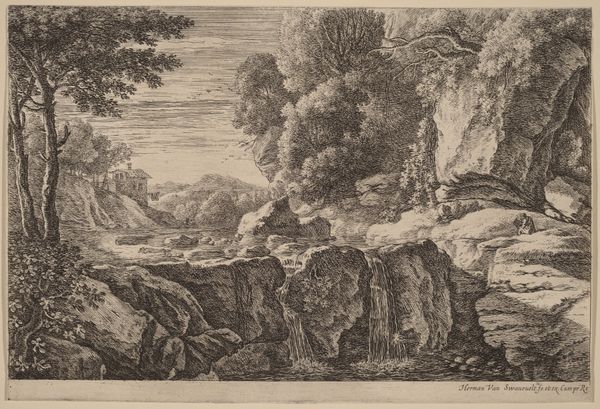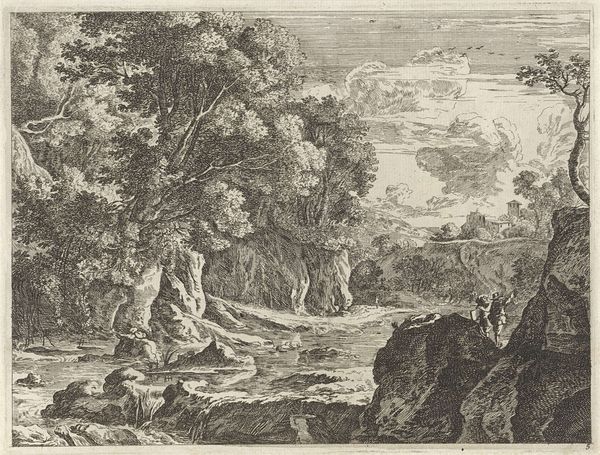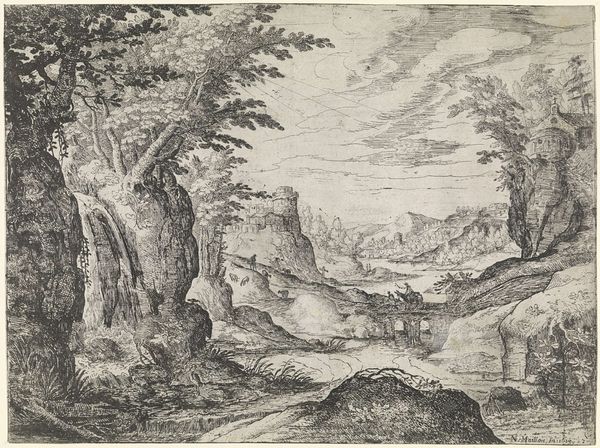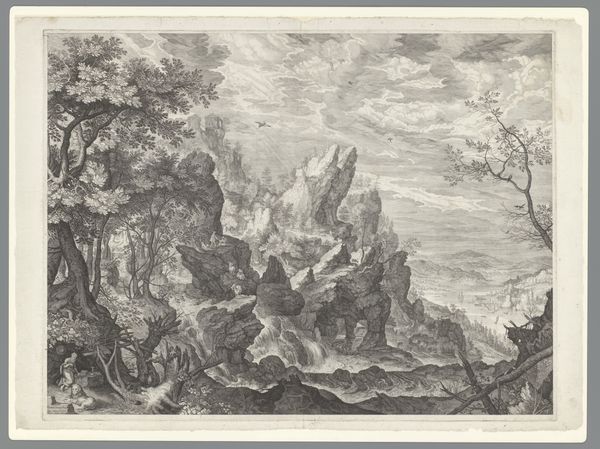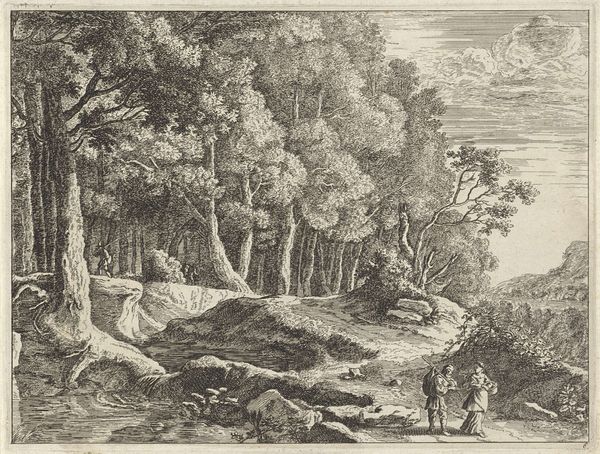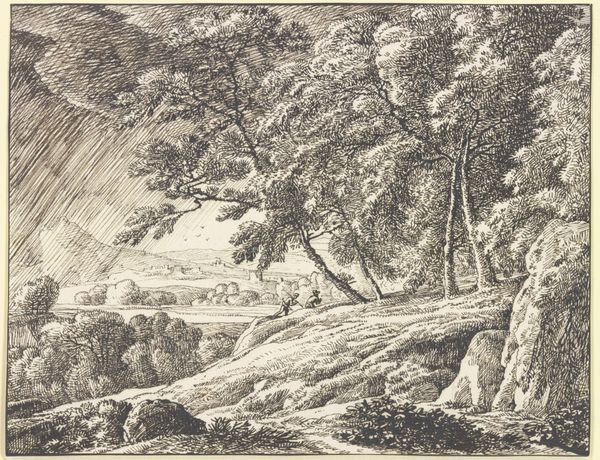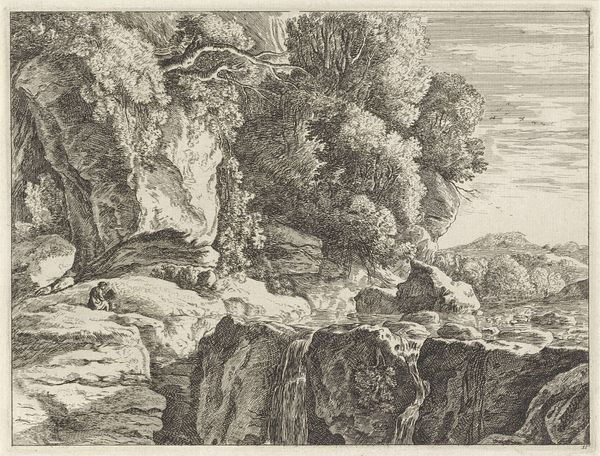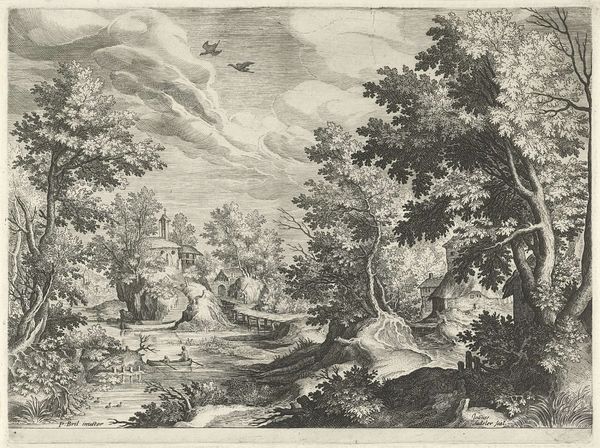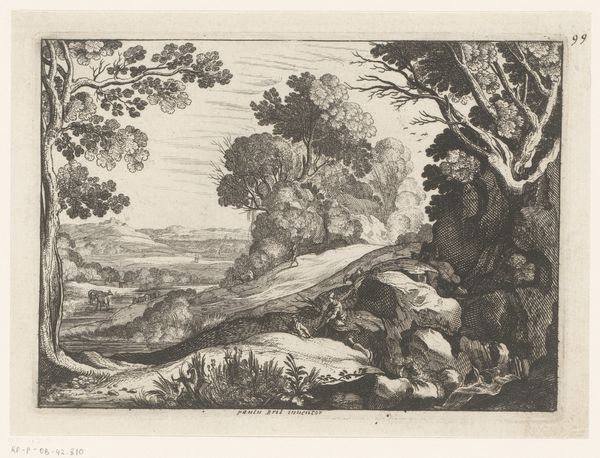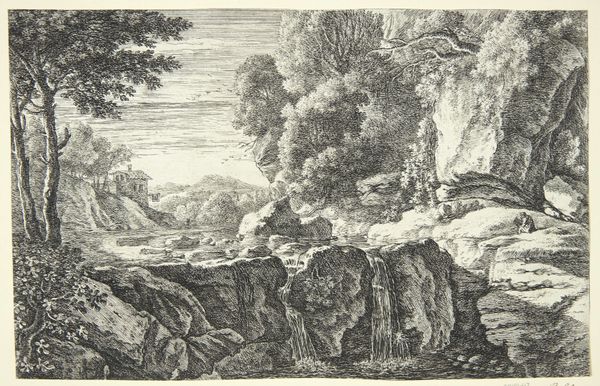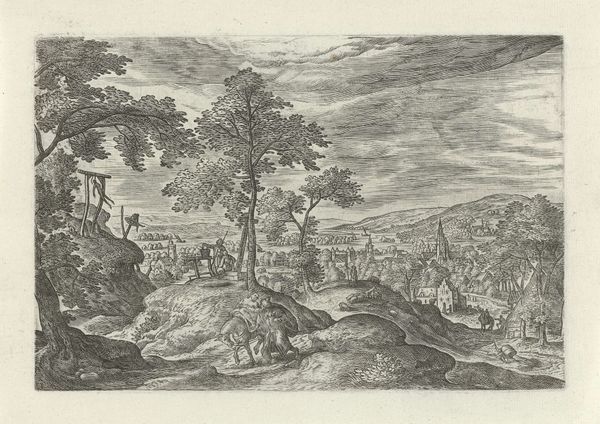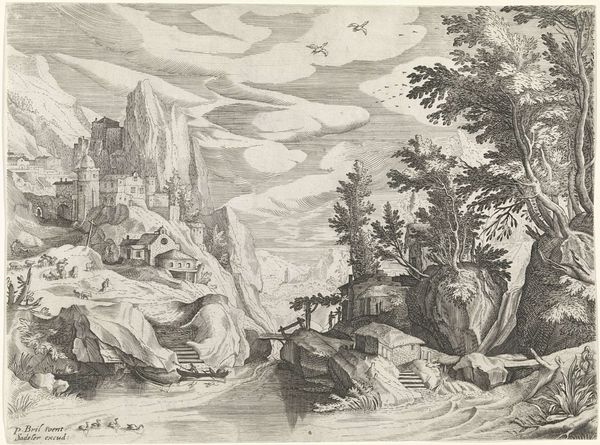
print, etching
# print
#
etching
#
landscape
#
mannerism
Dimensions: height 180 mm, width 235 mm
Copyright: Rijks Museum: Open Domain
Editor: So, here we have "Landscape with Ruins and a Wanderer," an etching made between 1598 and 1602 by Paul Bril. It has such a melancholic feeling to it, almost like a stage set for a play about loss. What do you see in this piece? Curator: The ruin, first and foremost, evokes a specific kind of nostalgia. Note how Bril uses a vocabulary of forms. The deliberately placed cross, along with the dilapidated structures, trigger the "memento mori" archetype that resonated deeply in the 16th century. Don’t you feel the artist uses visual cues to speak to the fragility of human achievements and the transient nature of life? Editor: Yes, absolutely. The crumbling architecture and even the tilted cross seem to emphasize that everything decays over time. Is there also perhaps a link to religious upheaval of the time, with established institutions collapsing? Curator: Indeed! The landscape itself can be read as a symbolic representation of the inner turmoil of the period. The wandering figure seems almost insignificant against the grandeur, or perhaps the desolation, of the scene. It calls upon us to recognize humanity within a cosmic narrative. How does it influence your modern sensibilities? Editor: I suppose it makes me think about our own time of upheaval and change. We may be insignificant in the face of time, but our actions have an impact, even if temporary. Curator: A profound interpretation, linking the ephemeral with our continuous striving to leave a lasting imprint. An elegant example of the timeless quality of potent images! Editor: I definitely learned more about how artists encode cultural memories and emotions within landscape.
Comments
No comments
Be the first to comment and join the conversation on the ultimate creative platform.
